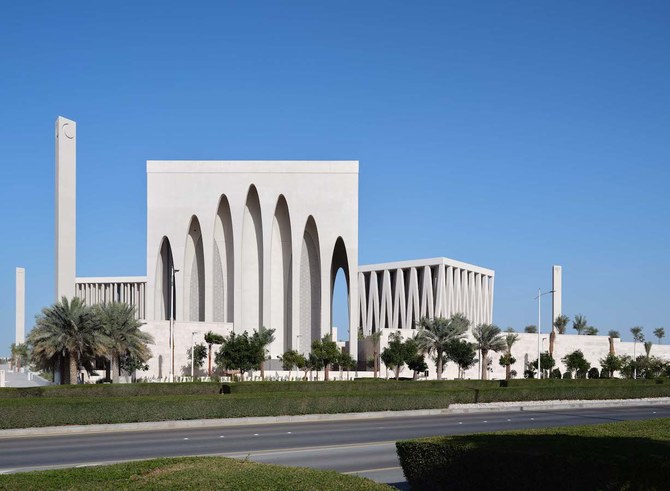Rawaa Talass
ABU DHABI: For the first time in the UAE, a mosque, church and synagogue are standing side-by-side in an elevated complex called the Abrahamic Family House.
Located in Abu Dhabi’s Saadiyat Cultural District, the complex’s neighbors are the Louvre Abu Dhabi, Guggenheim Abu Dhabi and Zayed National Museum — with the latter two under construction.
Entering the Abrahamic Family House is free of charge, with the exception of guided tours. It is currently only accessible to worshipers but will open to the general public on March 1.
Upon entering the welcoming center, visitors encounter an important object that started it all — a large foundation stone, signed by UAE president Sheikh Mohammed bin Zayed Al-Nahyan, Dubai ruler Sheikh Mohammed bin Rashid, Pope Francis and Grand Imam of Al Azhar Mosque in Cairo Ahmed El-Tayeb.
This architectural project arose as a result of the UAE declaring 2019 as the Year of Tolerance. “The Abrahamic Family House is a space to learn and to get together,” a representative told invited journalists at a press preview this week.
The airy and sun-washed venue was designed by Ghanaian-UK architect Sir David Adjaye. “As an architect I want to create something that enhances the richness of human life,” he said in a statement.
“Our hope is that through these buildings, people of all faiths and from across society can learn and engage in a mission of peaceful coexistence for generations to come.”
The thoughtfully executed complex features three modernistic and cube-like houses of worship, sharing the same scale of 30 meters high, wide and deep. All facilities are labeled in Arabic, English and Hebrew. Aside from the houses of prayer, the landmark has a baptistery, a purifying bath in Judaism called mikvah and ablution areas.
Made of regionally sourced limestone, the buildings reveal facades that are lined with pillars. Each exterior design has its own meaning, depending on its corresponding faith. The Catholic church, called His Holiness Francis Church, can seat up to 300 people. Inside, a large cross looms over the podium and a sea of wooden beams fall from its ceiling.
Throughout the venue, there are small calming pools of water, a symbolic element of purity, designed in the shape of a triangle, denoting the three religions on site. The houses also share a common garden of regional trees.
Meanwhile, His Eminence Ahmed El-Tayeb Mosque has seven arches, a significant number in Islam, on its facade. Under a high ceiling, its exterior and interior walls are embellished with bedazzling patterns, welcoming natural light inside.
Its style is a nod to an architectural element known as the mashrabiya — detailed wooden latticework commonly found in North Africa. Within the mosque, which can seat up to 322 people shoulder to shoulder, there is a smaller space dedicated to female worshipers.
And finally, the country’s first purpose-built synagogue is named after Moses Ben Maimon, a Jewish philosopher who was born in 12th century Cordoba, Andalusia. The synagogue, showing on its walls Judaism’s Ten Commandments, heavily features triangles in its architecture, referring to Prophet Abraham’s tent, an emblem of security and hospitality.
Courtesy: arabnews







